ロイ・リヒテンシュタイン (1923-1997)


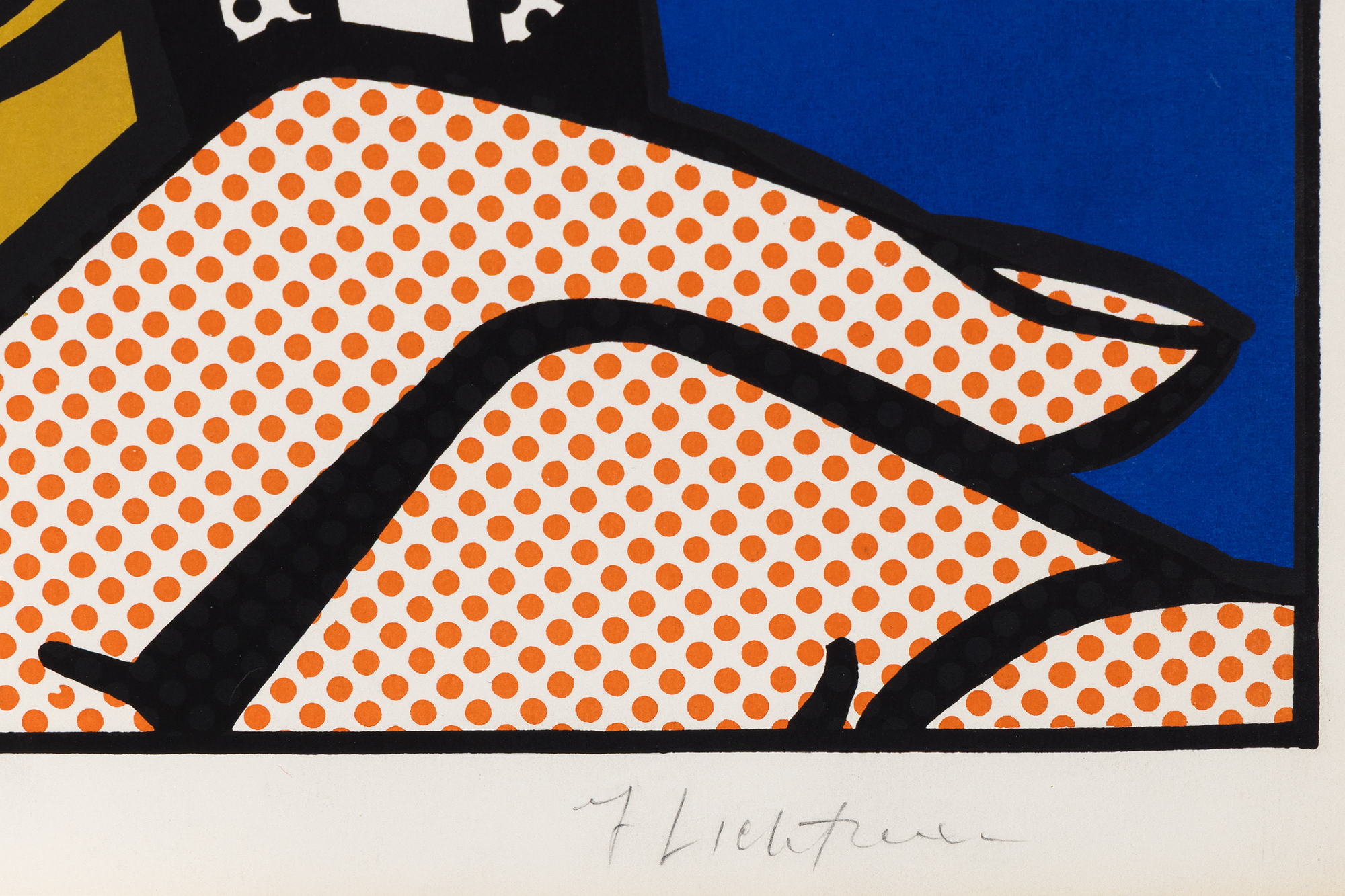

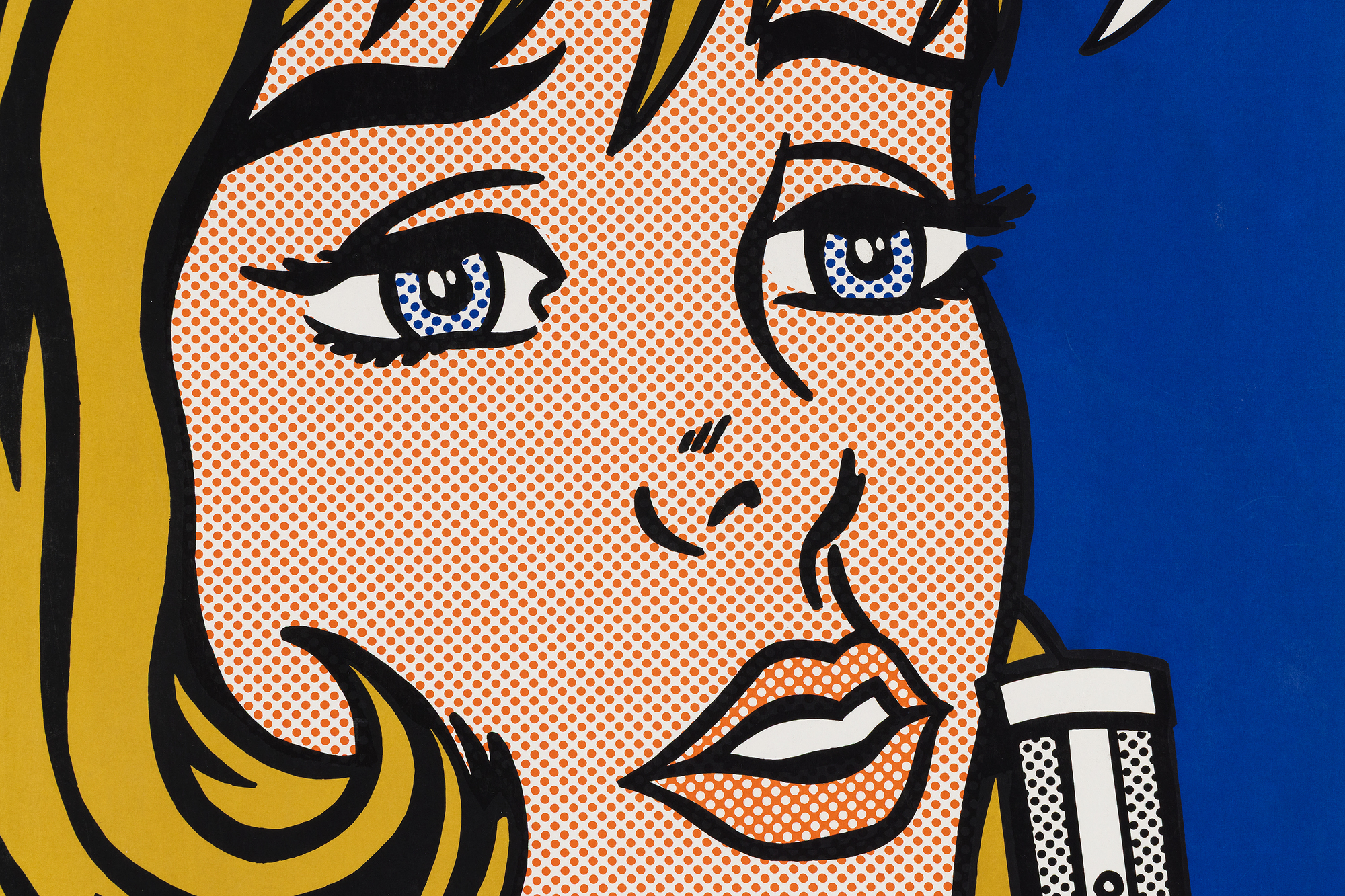
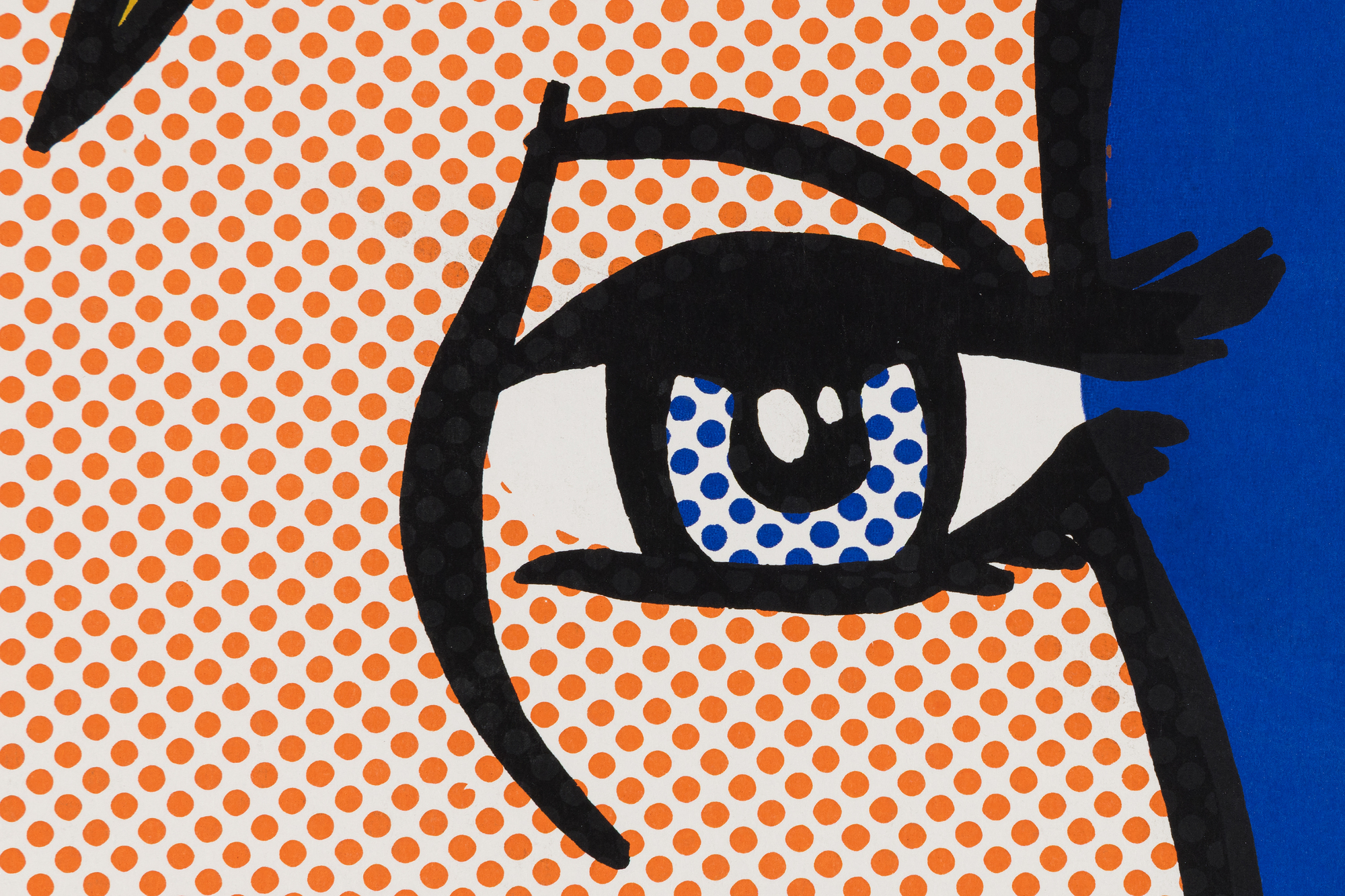
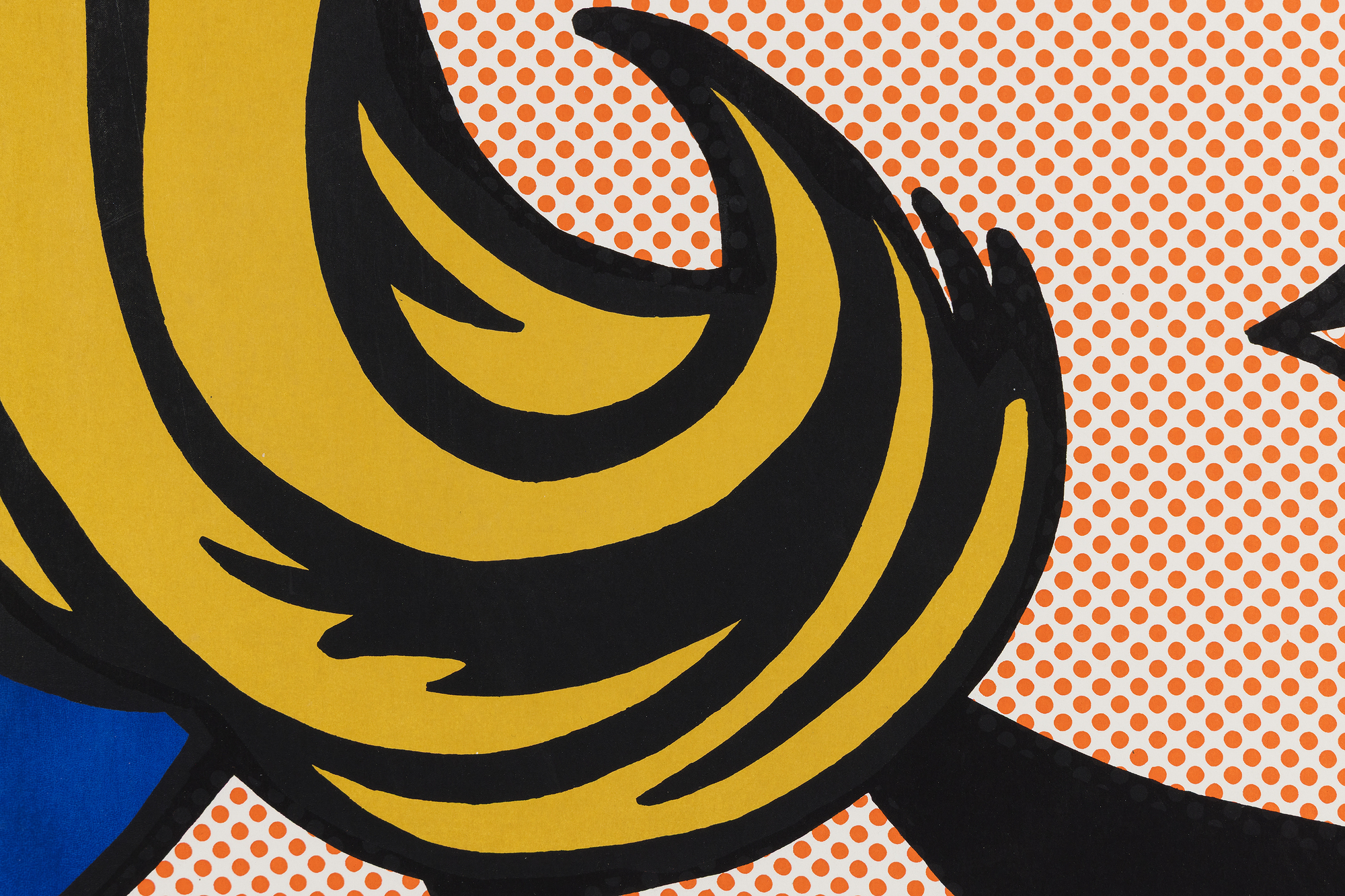

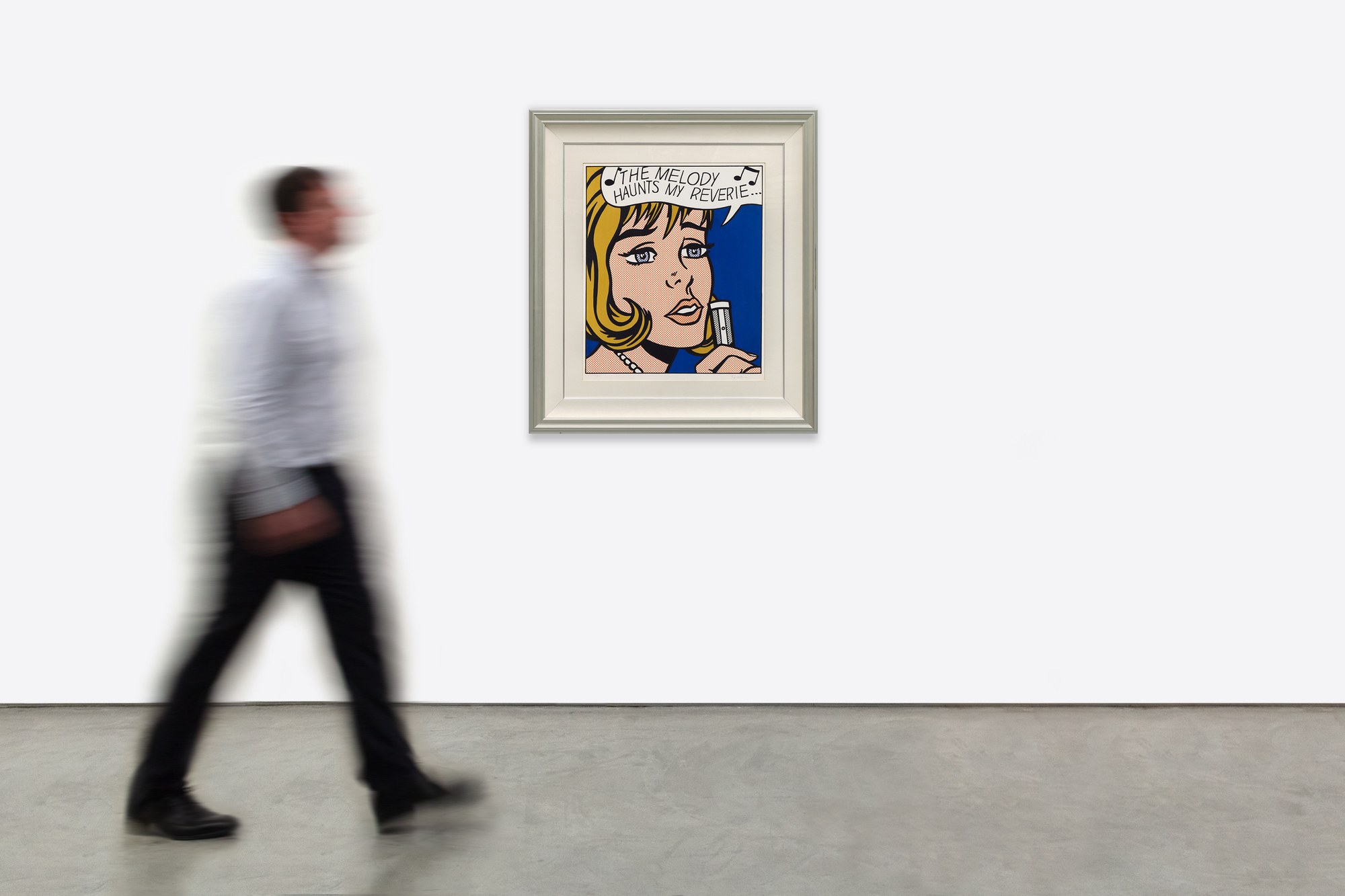
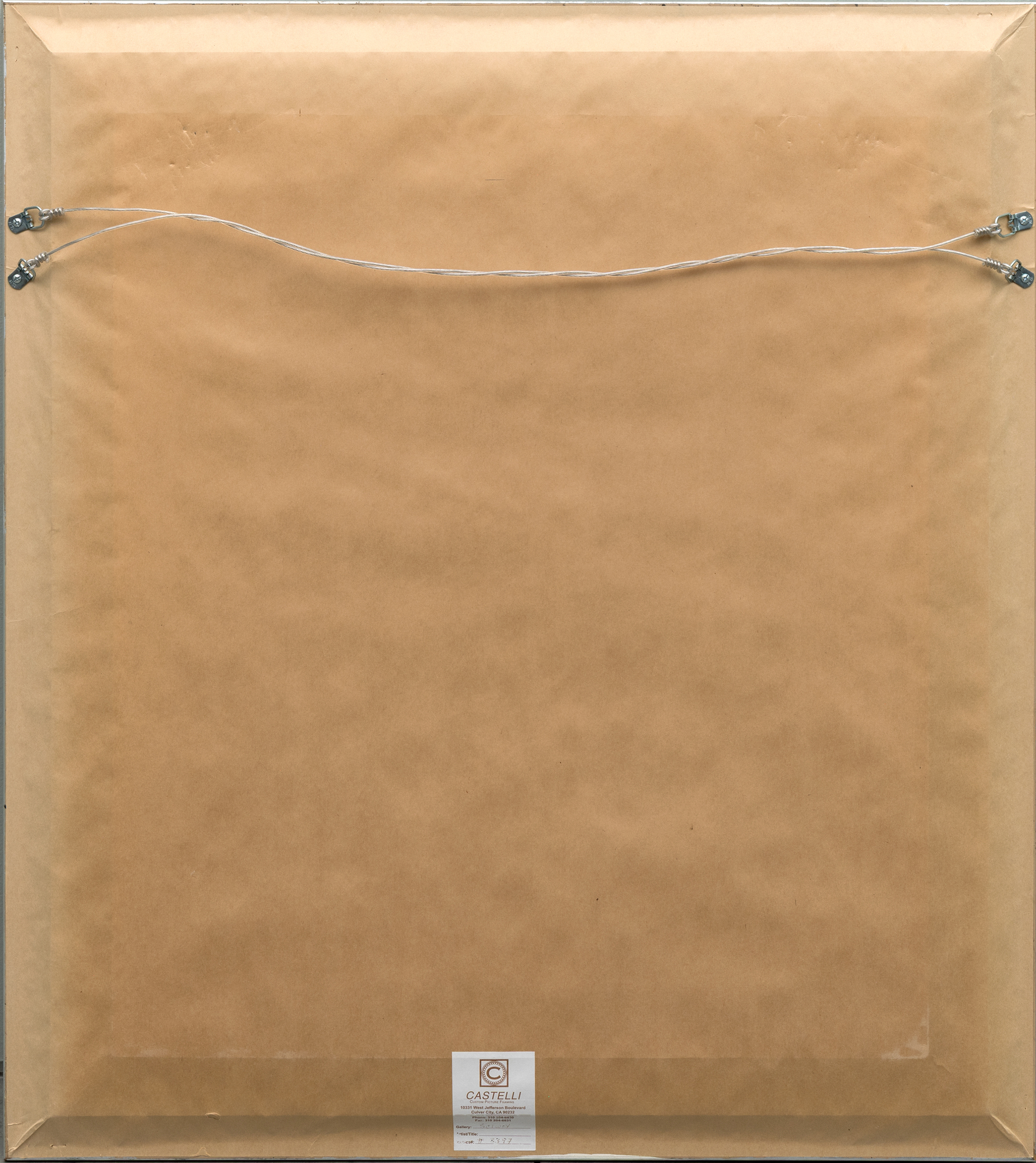
出所
ハミルトン・セルウェイプライベート・コレクション
文学
ポール・ビアンキーニ編ロイ・リキテンシュタインDrawings and Prints, Lausanne, 1970, no.Mary Lee Corlett, The Prints of Roy Lichtenstein:A Catalogue Raisonné, 1948-1993, 2nd ed., New York and Washington, D.C., 2002, no.38
Andrea Theil and Roy Lichtenstein Foundation, Roy Lichtenstein:A Catalogue Raisonné, New York, lichtensteincatalogue.org, no. 1132
195,000
Reverie」は、リキテンスタインの特徴であるベン・デイ・ドット、大胆な輪郭線、原色で描かれた物思いにふける様式化されたヒロインで、コミック・ブックの物語のメロドラマと抑制の両方を捉えている。タイトルは、ホーギー・カーマイケルのノスタルジックな1927年の歌「Stardust」を想起させる。特に「The melody haunts my reverie(メロディーが私の回想につきまとう)」という一節は、座っている人物の遠くを見つめる視線から伝わるノスタルジックな気分を強調している。リキテンスタイン自身は、『11人のポップ・アーティスト』への寄稿を、エッチングからスクリーン印刷まで、さまざまな版画技法を長年にわたって習得してきた集大成であり、初めての本格的なファインアート版画だと考えていた。
この版の印象は現在、シカゴ美術館、ナショナル・ギャラリー、ニューヨーク近代美術館、スミソニアン・アメリカン・アート・ミュージアムなどの主要なパブリック・コレクションに所蔵されており、その歴史的・芸術的重要性を裏付けている。


